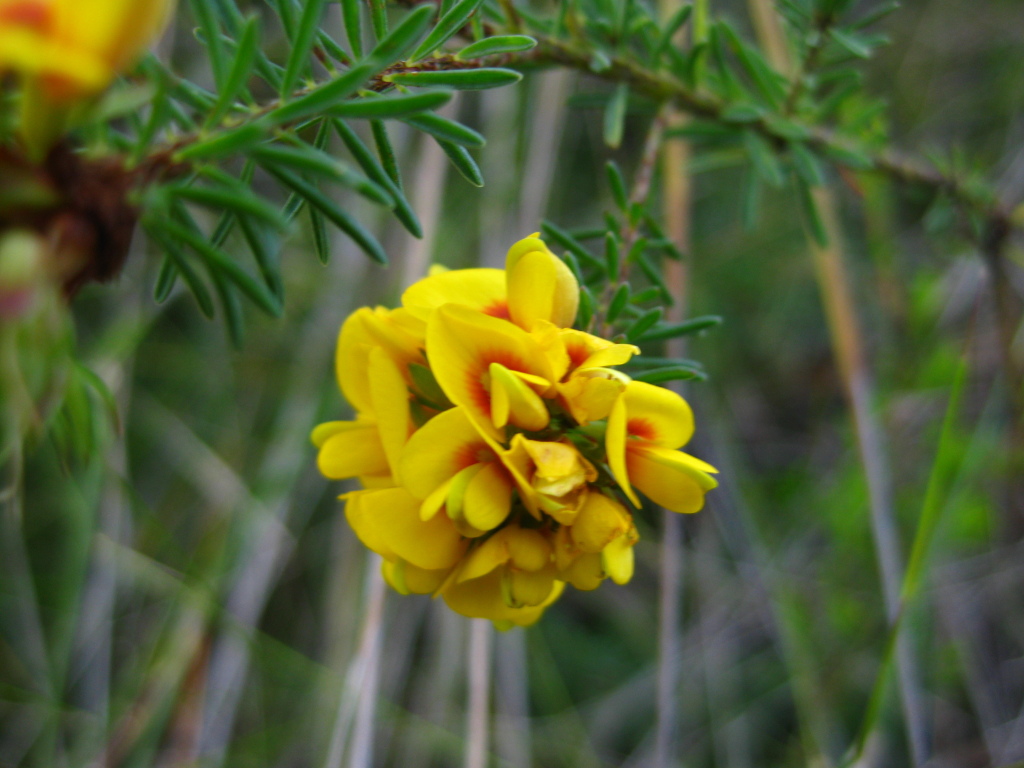Pultenaea weindorferi
Reader Swamp Bush-peaSlender, erect shrub to 2 m high; stems terete, glabrous. Leaves alternate, linear to very narrowly obovate, 6–15 mm long, 0.75–1.5 mm wide; apex obtuse; surfaces usually glabrous; margin incurved; stipules 3–4 mm long, partially united, often overlapping and obscuring stem, midrib prominent, tips recurved. Inflorescence a head-like cluster of more than 6 flowers subtended by floral leaves, the enlarged stipules of which show a gradation to floral bracts with only a small, vestigial leaf under innermost or youngest flowers; calyx 5–6 mm long, usually glabrous except for shortly ciliate margins of lobes; bracteoles attached at base of calyx tube, slender, lanceolate or linear, 4–5 mm long, concave; standard 6–7 mm wide; ovary and style usualy glabrous. Pod turgid, glabrous. Flowers Oct.–Nov.
VVP, GipP, CVU, HSF, HNF. Confined to swamps and drainage lines in scattered localities including Tonimbuk area and near Daylesford and Kinglake. Often associated with Eucalyptus cephalocarpa.
A distinctive variant with soft, long hairs on calyx and leaves and a tuft of hairs on the summit of the ovary occurs in the Kinglake National Park.
de Kok & West (2002) treated Pultenaea weindorferi as a taxonomic synonym of P. glabra (a NSW species). Pending a comprehensive morphological and molecular revision of the P. glabra species complex, the species is retained here as distinct.
Corrick, M.G. (1996). Pultenaea. In: Walsh, N.G.; Entwisle, T.J., Flora of Victoria Vol. 3, Dicotyledons Winteraceae to Myrtaceae, pp. 765–793. Inkata Press, Melbourne.
 Spinning
Spinningde Kok, R.P.J.; West, J.G. (2002). A revision of Pultenaea (Fabaceae) 1. Species with ovaries glabrous and/or with tufted hairs. . *Australian Systematic Botany * 15: 81–113.
